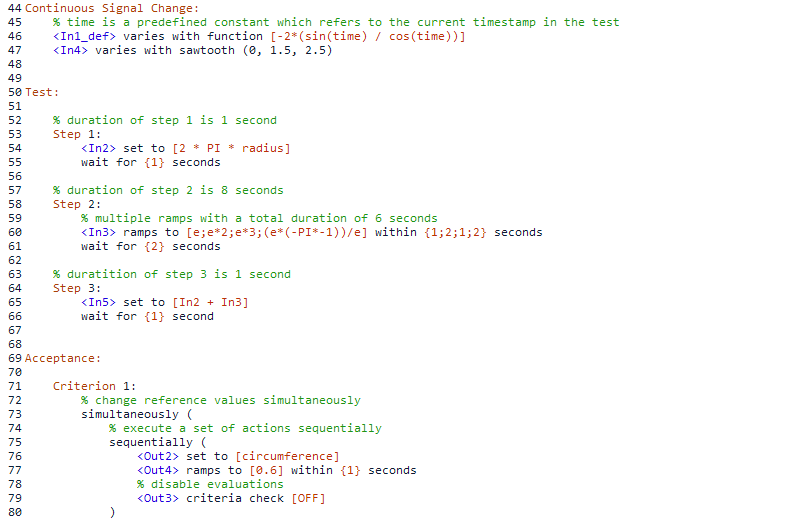
Tests in Arttest are based on a test specification language. The language is text-based and designed to be humanly readable and easy to understand. Thus, tests can be created without need of extensive training on the tool or the language itself. Moreover, state-of-the-art IDE features such as content completion is available, speeding up the required time to create a test, providing suggestions for viable input and syntax if the language is not yet completely known to the tester and avoiding potential errors during test creation, such as misspelled signal names.

Arttest tests consist of a declarative part, specifying the interface and initial conditions used in the test, a test section defining stimuli to the system under test and an acceptance section describing the expected output. Based on the provided model, a default declarative part is automatically generated (see harness generation). The test section and the acceptance section can be divided in steps to express different phases of a test. Once created, these phases can be imported in other tests to increase reuse of frequently needed test elements.
By using comments at any place in the test specification file, test semantics can be described in required detail such that the intend and relation of the elements used in the test will be clear to other colleagues or customers.
Due to the textual nature, test files are compatible with widely used versioning systems such as SVN or GIT to track changes.